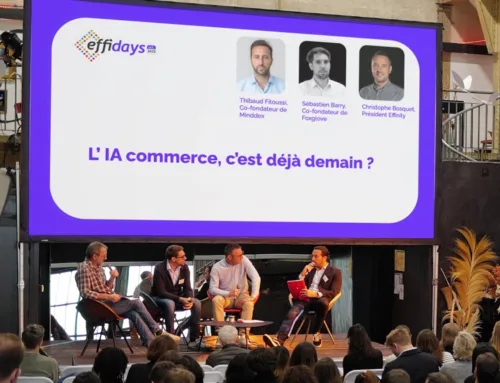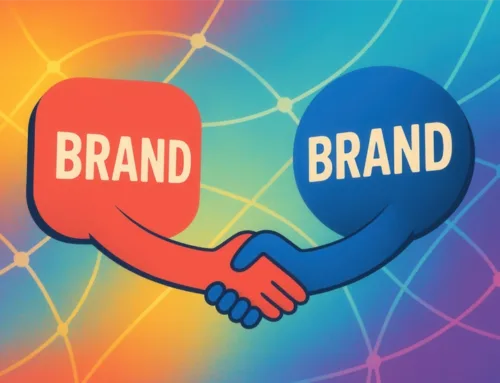A few years ago, the day after Christmas, we used to secretly resell the gifts we didn’t like on dedicated platforms. In 2022, we’re clearly showing our intention to buy and give second-hand gifts. What we used to be ashamed of is now a source of pride. A new way of consuming. The figures speak for themselves: 1 in 2 cyber-buyers claim to have bought at least one second-hand product in 2021, and 74% of cyber-buyers say they have the reflex to check whether a product is available second-hand before buying it new. And to convince ourselves of the scale of the phenomenon, we need look no further than the growth in Google searches for “refurbished” (+25%) and “second-hand” (+80%) in November 2022 compared to November 2021.
And have you thought about offering a second-hand product?
If you haven’t yet taken the plunge, it’s probably time to think about it, because the movement doesn’t seem to be stopping any time soon, and many advertisers are present on the market. While the first players were 100% dedicated to second-hand goods, many e-tailers are now deploying a second-hand offer. And this in a variety of sectors: sports, high-tech, fashion, etc. So it’s no coincidence that two specialist platforms, Leboncoin (6.6 million daily visitors) and Vinted (4.9 million daily visitors), now feature in the Top 5 of French e-commerce. And it’s no coincidence that almost all the players in the e-commerce top 20 have a second-hand offering.
Are you still hesitating? Not familiar with the subject? Then here’s a quick reminder of the three main causes of the second-hand market boom and its three main effects.
The boom in the second-hand market has at least three causes
Digital, a facilitator and gas pedal
While it’s clear that digital technology didn’t invent the second-hand market, it has given it considerable impetus, by enabling buyers and sellers to get in touch quickly and easily via dedicated platforms. And it could even be said (in all modesty) that it has helped to give it its letters of nobility, through a semantic pirouette that has taken it from the second-hand to the second-hand market.
Economic constraints
Price remains a fundamental criterion in consumer choices for 78% of French people. Buying second-hand products is therefore a good way for consumers to save money, find good deals, etc. An obvious choice…
Ecological constraints
Driven by the younger generation (but not only…), the traditional consumption model, based on possession, is gradually giving way to a model based on use. In this way, a product that is no longer useful to me can be resold and become useful again to someone else. This limits the production of new products, and therefore the impact on the environment.
The second hand has at least three effects
Fairer consumption
The boom in the second-hand market is putting consumption back on a “fairer” footing. By rebalancing sales between new and second-hand products, it is helping to combat the over-consumption that has been the new norm for many years.
More joyful consumption
For many people, buying second-hand is also a happier form of consumption than buying new. In the face of economic and ecological tensions, it allows consumers to make purchases that are less costly and less impactful on the environment, without compromising on quality or style! Real satisfaction.
A more creative and committed consumer
The regular appearance of new applications, new sites and new services focusing on the circular economy or committed purchasing is bringing real dynamism to the market. We can cite, for example, reward players who enable consumers to contribute through their purchases to a positive action (planting trees, donating to associations, etc.).
Effinity, a first-hand partner!
For all these positive effects, at Effinity, pushing second-hand players is a real pleasure. And we have developed real expertise in this field. In fact, our customers are experiencing 20% growth in refurbished or second-hand products in 2022, compared with the same period in 2021.
Within our network of partners, many players are promoting this movement, such as WeTri (the app that rewards waste recycling), Reepeat (a refurbished goods comparator) and Tritoo (a shopping engine dedicated to second-hand and refurbished goods), or encouraging the association of positive actions with one’s purchase, such as Lilo (the 1st French search engine for solidarity), ReFoorest & AllColibri (reward players who work for reforestation or are committed to causes) and many others. AllColibri (reward players who work for reforestation or charitable causes) and many others. But, more broadly, the growth in second-hand purchases benefits all partners, not just the specialists. In fact, second-hand is no longer a niche market, but now permeates all acquisition paths.
And tomorrow, the second hand?
You don’t have to be a soothsayer to think that the second-hand market still has many years ahead of it. Particularly as there are still many opportunities to be seized in all sectors, and even universes to be conquered such as the home, decoration and garden. What’s more, we’re seeing the emergence of new practices, such as product rental (between private individuals or by major retailers). While this market has not yet reached cruising speed, initiatives are multiplying. But what ultimately matters is that all this is contributing to a re-enchantment of consumption, and that consumers are happy to make their purchases, while getting a good deal and doing something for the environment. Even for Christmas!
Source: the figures quoted in this article are taken from a Fevad and KPMG study of September 2022.
Mis à jour le 23 January 2025
Mis à jour le 23 January 2025




